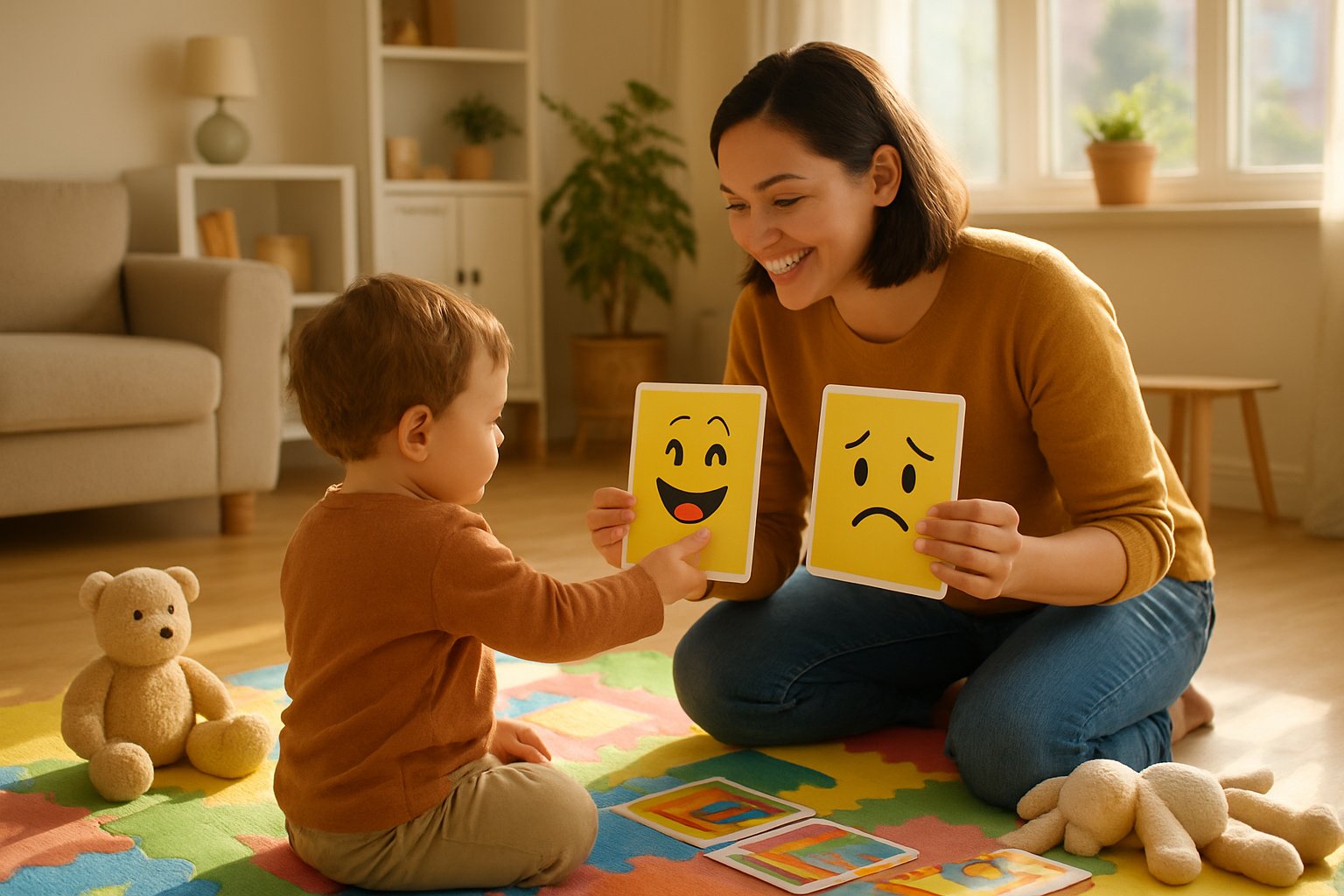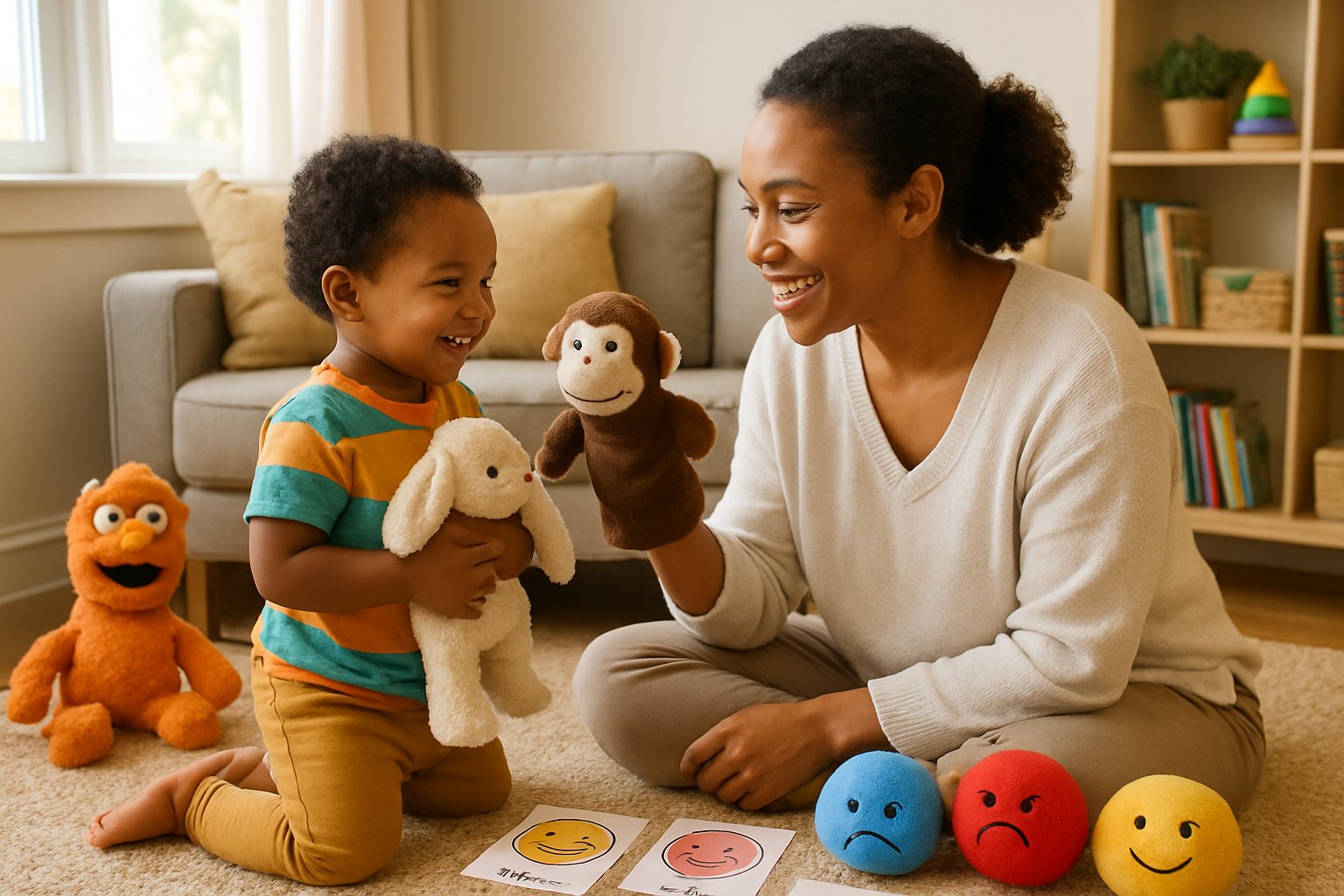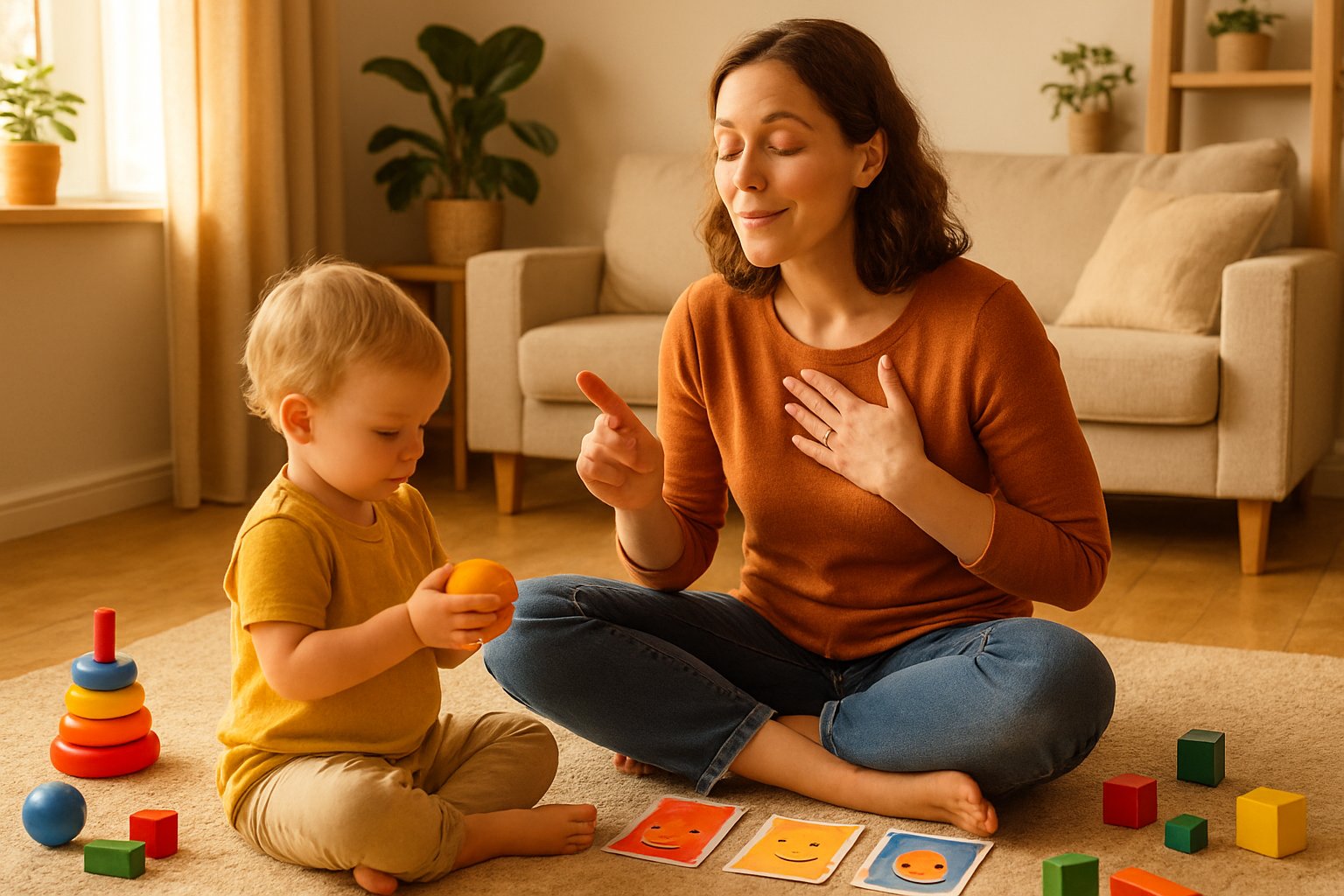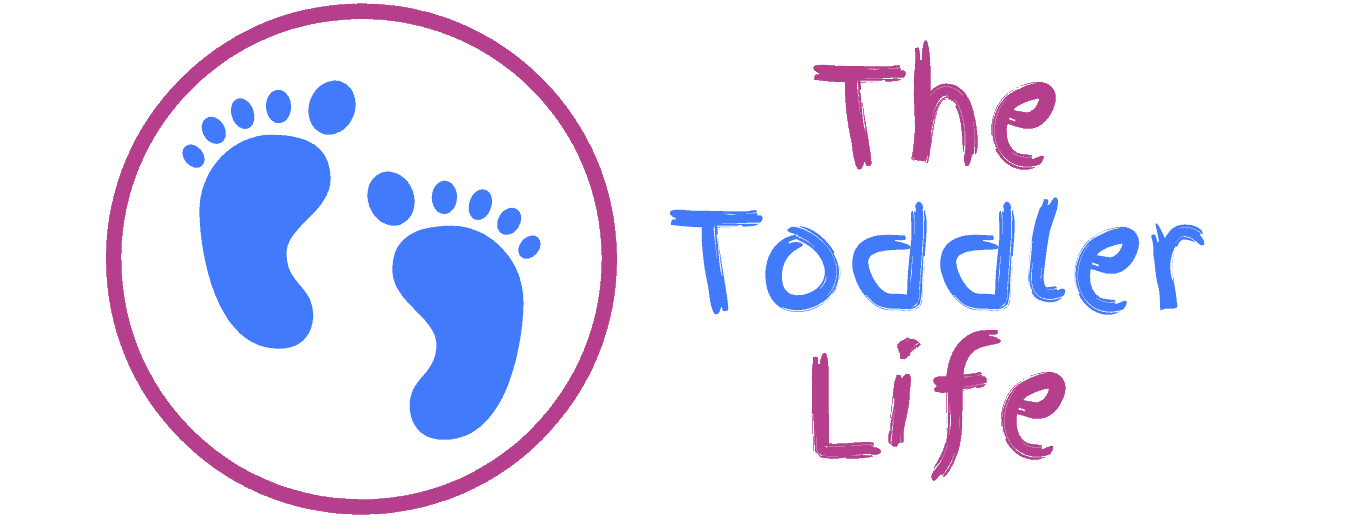Teaching toddlers emotional skills doesn’t require expensive toys or complex programs. Parents can use simple, everyday activities right at home to help their children learn how to understand and manage their feelings.
The most effective emotional learning happens through consistent daily interactions, play-based activities, and positive modeling that toddlers can easily understand and copy.

Young children between ages 1-3 are developing rapidly and learning how to express their emotions in healthy ways. Emotional activities for toddlers help them learn to express emotions, recognize feelings, and develop coping mechanisms for challenging situations.
This early foundation sets the stage for better relationships and emotional health throughout their lives.
The five methods covered in this guide focus on practical techniques that fit naturally into daily routines. These approaches help toddlers build emotional intelligence through play, conversation, and real-life practice.
Key Takeaways
- Parents can teach emotional skills through simple daily activities and positive modeling at home
- Toddlers learn emotions best through play-based activities and consistent practice with caregivers
- Early emotional learning builds the foundation for healthy relationships and self-regulation skills
Understanding Toddler Emotions
Toddlers experience big feelings but lack the words and skills to handle them well. Their brains are still growing, which makes emotional outbursts normal and expected during this stage.
Stages of Emotional Development
Toddler emotions develop in clear stages between ages 1-3. At 12-18 months, children show basic feelings like joy, anger, and fear but cannot name them.
18-24 months brings self-awareness. Toddlers start to recognize themselves in mirrors and understand they are separate from others.
This stage often includes more tantrums as they realize their own wants and needs.
24-36 months marks when language skills grow. Children begin to use simple emotion words like “mad” or “sad.”
They also start to understand that others have feelings too.
During each stage, the brain’s emotional centers develop faster than the areas that control behavior. This explains why toddlers feel so much but struggle to manage those feelings.
Parents can expect different emotional abilities at each age. A 15-month-old cannot calm down the same way a 2.5-year-old can.
Recognizing Common Toddler Feelings
Toddlers show emotions through their whole bodies, not just words. Anger often appears as hitting, throwing, or screaming.
Frustration might look like crying when they cannot do something. Joy and excitement come out as jumping, laughing, or running around.
Fear shows up as clinging to parents or hiding behind them. Sadness in toddlers looks different than in adults.
They might become very quiet, lose interest in toys, or want extra cuddles.
Many toddler emotions happen because of basic needs. Hunger, tiredness, or overstimulation can trigger big emotional reactions.
A meltdown at the grocery store often means the child is overwhelmed, not being difficult.
Physical signs help parents spot emotions early:
- Clenched fists (anger or frustration)
- Wide eyes (fear or surprise)
- Slumped shoulders (sadness)
- Bouncing or wiggling (excitement)
The Importance of Emotional Awareness
Emotional awareness helps toddlers learn to name and manage their feelings. Children who develop these skills early have better mental health and social skills as they grow up.
Self-awareness starts when toddlers can identify their own emotions. This skill helps them understand why they feel upset and what might help them feel better.
Teaching emotional awareness also builds empathy. When children understand their own feelings, they begin to recognize emotions in others too.
Benefits of emotional awareness include:
- Fewer tantrums over time
- Better friendships with other children
- Improved communication with parents
- Stronger problem-solving skills
Children who learn about emotions early are more likely to ask for help when they need it. They also develop better coping skills for stress and change.
Research shows that toddlers can start learning basic emotion words as early as 18 months. The earlier parents start teaching toddlers about emotions, the more natural these skills become.
Modeling Positive Emotional Behaviors
Children learn emotional skills by watching how adults handle their feelings and reactions. When parents demonstrate healthy emotional expression and self-regulation, toddlers develop these same abilities naturally through observation.
Demonstrating Self-Regulation
Parents can show toddlers how to manage big emotions by practicing self-regulation techniques in front of them. When a parent feels frustrated, they can take deep breaths and say “I need to calm down” out loud.
This teaches toddlers that all people have strong emotions. It also shows them specific ways to handle these feelings.
Key self-regulation behaviors to model:
- Taking three deep breaths before responding
- Counting to ten when angry
- Using a calm voice even when upset
- Walking away to cool down when needed
Parents should identify their emotions out loud during these moments. They might say “I feel angry right now, so I’m going to take some deep breaths.”
This helps toddlers connect emotions with words and actions.
Expressing Emotions Openly
Healthy emotional expression means sharing feelings in appropriate ways. Parents can show toddlers how to talk about emotions without yelling or shutting down.
When parents feel sad, they can explain their feelings simply. They might say “I feel sad because my friend is sick, but I know she will get better.”
This teaches toddlers that emotions are normal parts of life. It also shows them how to put feelings into words rather than acting out.
Ways to express emotions appropriately:
- Use feeling words like happy, sad, frustrated, or excited
- Keep explanations simple and age-appropriate
- Show that emotions pass with time
- Demonstrate empathy when others have strong feelings
Parents should avoid hiding all negative emotions from toddlers. Children need to see that adults have different feelings and know how to handle them safely.
Staying Calm During Challenging Moments
The most important time to model good emotional skills is during stressful situations. When toddlers have tantrums or make mistakes, parents can show them how to stay calm under pressure.
This means speaking in a normal tone of voice even when the child is screaming. It also means taking breaks when needed to avoid losing control.
Parents can practice self-care techniques during difficult moments. They might step into another room for thirty seconds to collect themselves.
Strategies for staying calm:
- Lower your voice when the child gets louder
- Take slow, deep breaths before responding
- Use neutral body language
- Focus on solving the problem, not punishing behavior
When parents stay calm, toddlers learn that problems can be solved without big emotional outbursts. This teaches them that they can handle difficult situations too.
Naming and Validating Emotions
When toddlers learn to identify their feelings through words, they develop better emotional control. Parents can teach emotion vocabulary through simple labels, use facial expressions to show feelings, and validate their child’s emotional experiences to build trust and understanding.
Teaching Emotion Vocabulary
Parents should start with basic feeling words like happy, sad, angry, and scared. These simple labels help toddlers understand what they experience inside their bodies.
Teaching toddlers to name their feelings works best when parents use clear, simple words. Children need to hear the same emotion words many times before they remember them.
Parents can label emotions during daily activities. When a toddler cries because their toy broke, a parent might say “You feel sad about your toy.”
Common starter emotions to teach:
- Happy
- Sad
- Mad
- Scared
- Excited
- Frustrated
Reading books about feelings helps expand emotion vocabulary. Parents can point to characters and name what they might feel based on the story.
Using Facial Expressions and Body Language
Toddlers learn about emotions by watching faces and body movements. Parents should match their facial expressions to the emotion words they use.
When teaching “angry,” parents can show a frown and tense shoulders. For “happy,” they can smile widely and stand tall.
This helps toddlers connect the feeling word to physical signs.
Toddlers make sense of their emotions by watching how adults react. They look for clues about whether feelings are normal or wrong.
Parents should describe what they see on their toddler’s face. “I see your eyebrows are down and your mouth is turned down. You look angry.”
Physical signs to point out:
- Tears when sad
- Tight fists when angry
- Big smiles when happy
- Wide eyes when surprised
Mirror play helps toddlers see their own facial expressions. Parents can make different emotion faces together in the mirror and name each feeling.
Validating Your Toddler’s Feelings
Validation means telling toddlers their feelings are normal and okay. This builds emotional awareness and stronger communication skills between parent and child.
When toddlers have big emotions, parents should stay calm and speak softly. Dropping down to the child’s level and slowing down speech helps them feel heard.
Parents can say phrases like “It’s okay to feel frustrated” or “Everyone gets angry sometimes.” This teaches toddlers that all feelings are normal parts of life.
Validation steps:
- Name what you see: “You’re crying”
- Label the emotion: “You seem frustrated”
- Validate the feeling: “It’s okay to feel frustrated”
- Pause between each step
Building emotional intelligence through validation helps toddlers develop better communication abilities. Children who feel understood have fewer behavior problems.
Parents should avoid saying “don’t cry” or “you’re fine.” These phrases tell toddlers their feelings are wrong or bad.
Role-Playing and Dramatic Play for Emotional Growth

Creating characters and acting out different situations helps toddlers practice emotions in a safe space. These activities teach children to understand feelings, solve problems, and connect with others through imaginative play.
Role-Playing Scenarios at Home
Simple role-playing activities help children develop critical social and emotional skills by letting them practice real-life situations. Parents can start with basic scenarios like playing doctor, teacher, or shopkeeper.
Easy scenarios to try:
- Doctor visits: Use toy medical tools to help toddlers work through fears.
- Restaurant play: Practice ordering food and using polite words.
- Family roles: Let children be the parent while adults play the child.
- Pet care: Pretend to feed and care for stuffed animals.
These activities work best when parents join in actively. Children learn faster when adults model emotions and reactions during play.
Role-playing gives toddlers a chance to practice handling difficult feelings. A child afraid of the dentist can play dentist first, which often reduces their anxiety about real appointments.
Encouraging Dramatic Play
Dramatic play strengthens social-emotional skills as children explore different characters and situations. Parents can support this by providing simple props and costumes.
Props that spark imagination:
- Old clothes and hats for dress-up
- Empty boxes for houses or cars
- Kitchen items for cooking games
- Dolls and stuffed animals for caregiving play
The key is following the child’s lead. If they want to be a superhero, parents can ask about the superhero’s feelings or problems to solve.
Dramatic play allows children to step into different characters, which builds their ability to understand various perspectives. This natural exploration helps them process their own experiences and emotions.
Building Empathy Through Play
Fostering empathy happens when children practice seeing situations from different viewpoints. Role-playing naturally creates these opportunities as toddlers take turns being different characters.
Parents can ask questions during play to develop empathy:
- “How do you think the baby doll feels?”
- “What would make the teddy bear happy?”
- “Why might your friend be sad in this game?”
Activities that build empathy:
- Taking turns being different family members
- Acting out stories with various characters
- Playing with dolls or action figures
- Pretending to comfort upset toys
Children develop problem-solving skills when they work through conflicts during dramatic play. They learn to negotiate, share ideas, and find solutions that work for everyone involved.
Introducing Coping Strategies and Self-Regulation Techniques

Toddlers need concrete tools to manage big emotions and develop self-control. These techniques help children recognize their feelings and respond appropriately instead of having meltdowns.
Simple Coping Strategies for Toddlers
Coping strategies for toddlers work best when they are easy to understand and practice. Young children respond well to visual and physical techniques they can use anywhere.
Deep breathing exercises form the foundation of emotional regulation. Parents can teach toddlers to “smell the flower” by breathing in slowly through their nose, then “blow out the candle” by exhaling through their mouth.
Counting techniques help children pause before reacting. Simple counting from one to five gives toddlers time to calm down.
They can count on their fingers or count objects around them.
Physical movement releases built-up energy and tension. Jumping jacks, marching in place, or doing simple stretches help toddlers reset their emotions.
Sensory tools provide immediate comfort during difficult moments. Stress balls, fidget toys, or soft blankets give toddlers something concrete to focus on when feelings become too big to handle alone.
Creating a Calm-Down Routine
A calm-down routine gives toddlers a predictable way to manage overwhelming emotions. Consistent routines help children feel secure and know what to expect during difficult moments.
Choose a quiet space in the home where toddlers can go to calm down. This area should have comfortable seating and calming items like books or soft toys.
The space should feel safe, not like punishment. Practice breathing techniques regularly as part of the routine.
Parents can pretend to blow up balloons by breathing in slowly through the nose and out through the mouth. This makes breathing exercises fun and memorable.
Use visual cues to help toddlers remember the steps. Simple pictures showing breathing, counting, or hugging a stuffed animal can guide children through the process independently.
Keep routines short and age-appropriate. Toddlers have limited attention spans, so calm-down routines should last only 2-3 minutes.
Teaching Emotional Resilience
Emotional resilience helps toddlers bounce back from difficult situations and cope with future challenges. Teaching emotional regulation skills builds confidence and independence over time.
Label emotions clearly when they happen. Parents should name feelings as they occur: “You feel frustrated because your tower fell down.”
This helps toddlers connect words to their internal experiences. Validate feelings before offering solutions.
Telling toddlers their emotions are normal and okay helps them feel understood. This validation makes children more willing to try coping strategies.
Practice during calm moments when emotions are manageable. Role-playing different scenarios helps toddlers learn skills before they need them in real situations.
Celebrate small wins when toddlers use coping strategies successfully. Positive recognition reinforces good habits and motivates children to keep practicing their emotional regulation skills.
Boosting Social-Emotional Skills Through Daily Interactions
Parents can transform everyday moments into powerful learning opportunities by focusing on meaningful conversations. Guiding social exchanges and helping children navigate challenges as they arise naturally throughout the day also strengthens these skills.
Promoting Open Communication
Open communication starts with active listening during routine activities. Parents should get down to their toddler’s eye level during conversations.
This simple action shows respect and encourages the child to share their thoughts. Mealtime offers perfect chances to practice communication skills.
Ask specific questions like “What made you laugh today?” instead of “How was your day?” These detailed questions help toddlers express complex emotions.
Reading books together builds vocabulary for feelings. Point to character faces and name emotions like frustrated, excited, or worried.
This gives toddlers words to describe their own experiences. Validate feelings even when behaviors need correction.
Say “You’re angry that playtime ended, but we still need to clean up.” This approach teaches that emotions are normal while maintaining boundaries.
Create daily check-ins where toddlers can share one happy moment and one difficult moment. Keep these conversations brief but consistent to build trust and emotional awareness.
Fostering Healthy Social Interactions
Social interactions happen naturally during family activities and community outings. Model sharing by saying “I’ll share my snack with you” during everyday moments.
Toddlers learn social skills best through imitation. Practice turn-taking during simple activities like cooking together.
Let the toddler stir while you add ingredients. This teaches patience and cooperation without formal lessons.
Play-based activities provide safe spaces for toddlers to practice social skills without real-world pressure. Set up pretend scenarios like grocery shopping or doctor visits where toddlers can explore different roles.
Teach empathy by pointing out others’ emotions during daily life. Say “Look, your sister is crying because she’s sad” when situations arise naturally.
Guide conflict resolution between siblings or friends. Help toddlers use words instead of physical actions by suggesting phrases like “I don’t like that” or “Please stop.”
Problem-Solving in Real-Life Situations
Problem-solving skills develop when parents guide toddlers through actual challenges instead of immediately fixing problems. When a toy breaks, ask “What could we do about this?” before offering solutions.
Let toddlers make age-appropriate choices throughout the day. Offer two outfit options or two snack choices.
Decision-making builds confidence and thinking skills. When a toddler gets frustrated with a puzzle, suggest taking three deep breaths together before trying again.
Break big problems into smaller steps. If the toddler wants a toy that’s too high, guide them through: identify the problem, think of solutions, and choose the safest option.
Celebrate effort over results. Say “You kept trying even when it was hard” instead of “Good job.” This builds resilience and encourages future problem-solving attempts.
Frequently Asked Questions
Parents often wonder about the best approaches for teaching emotional skills at specific ages and situations. These questions address practical methods for different developmental stages and common challenges families face when supporting their child’s emotional growth.
What activities can help improve a 3-year-old’s emotional development?
Three-year-olds benefit from simple emotion identification games. Parents can use emotion masks made from paper plates to help children recognize different feelings.
Reading books about emotions together works well at this age. Children can point to characters’ faces and name the emotions they see.
Simple role-playing activities help three-year-olds practice expressing feelings. They can pretend to be different characters experiencing various emotions.
Creating a calm corner with soft pillows and books gives children a safe space to process big feelings. This teaches them healthy coping strategies.
How can parents support their 4-year-old’s social and emotional growth through at-home activities?
Four-year-olds can handle more complex social-emotional activities that involve turn-taking and sharing. Board games teach patience and handling disappointment.
Feelings charades works well for this age group. Parents act out emotions while children guess what feeling is being shown.
Cooking together provides opportunities to practice following directions and working as a team. Children learn cooperation and communication skills.
Art projects that focus on emotions help four-year-olds express feelings creatively. They can draw pictures showing happy, sad, or angry faces.
What are some emotional skills activities specifically tailored for 5-year-old children?
Five-year-olds can engage in more sophisticated emotional learning. They can create emotion journals where they draw or write about their daily feelings.
Problem-solving scenarios work well at this age. Parents can present simple conflicts and ask children to think of solutions.
Yoga activities designed for children help five-year-olds learn self-regulation and body awareness. These activities teach breathing techniques for managing stress.
Memory games using emotion cards challenge five-year-olds to remember and match different feelings. This builds emotional vocabulary and recognition skills.
How can toddlers’ social relationships with peers be enhanced through play and interaction?
Playdates provide natural opportunities for toddlers to practice social skills. Children learn to share toys and take turns through guided play.
Group activities like building blocks together teach cooperation. Toddlers learn to communicate their ideas and listen to others.
Pretend play scenarios help children understand different perspectives. They can act out being a doctor, teacher, or parent.
Simple group games with rules introduce concepts of fairness and following directions. Musical chairs or freeze dance work well for this purpose.
Can you suggest examples of emotional activities that are suitable for kids aged 2 to 3 years?
Two and three-year-olds respond well to basic emotion identification activities. Parents can make faces showing different feelings for children to copy.
Simple sorting games using happy and sad face cards help young toddlers categorize emotions. This builds basic emotional understanding.
Puppet shows with emotional themes engage this age group effectively. Puppets can demonstrate feelings while children watch and learn.
Reading books about emotions works particularly well for two and three-year-olds. Parents can pause to discuss characters’ feelings.
What are the key strategies for teaching toddlers about managing and expressing their emotions?
Modeling appropriate emotional responses is the most important strategy. Children learn by watching how parents handle their own feelings.
Teaching cause-and-effect relationships helps toddlers understand why they feel certain ways. Parents can connect events to emotional responses.
Creating consistent routines for emotional discussions helps normalize talking about feelings. Regular check-ins about emotions build communication habits.
Providing clear language for emotions gives toddlers the tools they need to express themselves. Parents should name feelings as they occur throughout the day.

